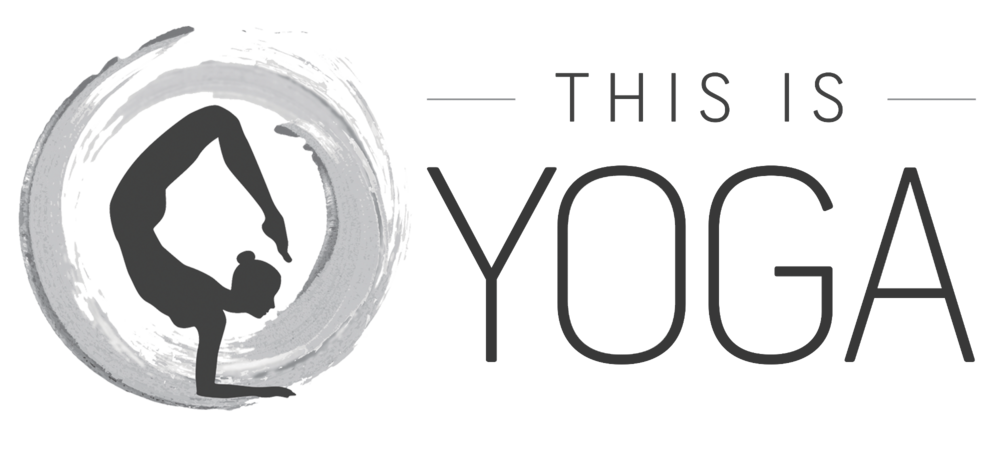Marie Kondo is well known for her life changing methods of tidying and reducing the amount of clutter we have. Whilst decluttering tangible items can have a significant impact on our well-being and modd, so to can decluttering intangible items, such as a to-do list. The article below walks you through the process of managing your to-do list, following the Marie Kondo method. From this, we can hopefully live with more metal clarity and less weight on our minds. Check it out!
Your to-do list should spark joy, not dread.
Your to-do list is an extension of your mind. It’s the spare room where you keep tomorrow’s work tucked away so you can focus on what’s in front of you today.
But just like a spare room, if you don’t regularly tidy up your list, things get cluttered. Instead of being a reliable source of to-dos, it becomes a task in itself to sort through the mess and figure out what to work on next. A tidy task list does more than just improve productivity — it benefits your mental clarity, decision-making, and even your mood.
Taking a cue from Marie Kondo’s excellent The Life-Changing Magic of Tidying Up, you can declutter your task list in the same way she tidies physical belongings: by establishing a few simple, organisational habits.
1. Before you start, visualise your destination
How can you know which tasks are worth doing if you don’t know where you want to go? How will you find the motivation to keep your to-do list clutter-free if you don’t know why you’re decluttering in the first place?
Before touching any clutter, Marie first asks her clients to envision the life they want to achieve by tidying up.
Think in concrete terms so that you can vividly picture what it would be like to live in a clutter-free space.
Or in our case, a clutter-free to-do list. Before you even start looking at your tasks, write down what having a neatly organised and prioritised to-do list would mean for your life. Maybe you want to run a successful business, get in shape, be more present with your family, have closer relationships with friends, or lead a more adventurous life.
Find a medium that lets you truly envision the details. You can describe it in words, mind map it, draw it out, create a Pinterest board, collect Youtube videos, or brainstorm in whatever form suits you.
But don’t stop there. “to prevent rebound you need to move ahead properly, step by step, as you launch into this once-in-a-lifetime event,” Marie says. “Your next step is to identify why you want to live like that.”
Why do you want to get in shape? The answer might be “to have more energy and feel more confident.” Why do you want to have more energy and feel more confident? Maybe the answer is “to be more fully yourself and stop worrying about what other people think of you.” Ask yourself “why” 3-5 times for every item in your vision. Marie explains the importance of this step to prevent a relapse into messiness:
As you continue to explore the reasons behind your ideal lifestyle, you will come to a simple realisation. The whole point in both discarding and keeping things is to be happy. It may seem obvious, but it is important to experience this realisation for yourself and let it sink into your heart. Before you start tidying, look at the lifestyle you aspire to and ask yourself, “Why do I want to tidy?”
Keep your “why” top-of-mind as you tidy and after by creating a task in your To-do list that represents your final vision. If you have an accompanying document or image, link to it from your task or attach it to your task comments. This is your True North that will help you determine whether a task is worth doing. If you’ve written out an all-encompassing vision, break it down into several goals for each area of your life, and create a task for each.
Use your final goal to keep your tasks aimed in the right direction.
You may want to give your task a recurring due date to review the vision you set out for yourself at the start of each day.
Once you’re clear on why you’re tidying, you’re ready to start tackling the hard decisions of what to keep on your to-do list and what to let go of.
2. Finish discarding first
Think of your task list like a physical space: when it’s crammed with random stuff, it becomes too hard to find the things that you actually need.
Right now, your to-do list may be stuffed with half-baked ideas, empty projects, and tasks you forgot to check off:
Discard first, organise second.
Following Marie’s system, it’s time to do a task inventory.
It’s not just Marie. David Allen, the author of Getting Things Done, believes that organising our life is actually a search for mental space: GTD is “more of a space management system.”
Do a complete task inventory
When Marie Kondo arrives at a house to tidy it up, she begins by kneeling on the floor in the centre of the living room to show respect for all of its belongings. From there, she helps her client begin the journey, considering each and every item in turn.
Take the same approach (kneeling optional) and do a full inventory of all the tasks and projects in your To do list. Depending how cluttered your to-do list is, you may want to dedicate a full day or even a weekend to this endeavour. As Marie says, “Tidy a little bit each day and you’ll be tidying forever.”
Remember, this exercise isn’t just about decluttering your to-do list — it’s about cutting away the nonessential so that the only tasks you have left are the ones that bring you closer to the life you want to live. Marie’s famous standard is “does it spark joy?” If the answer is yes, keep it. If not, get rid of it.
For your to-do list, we recommend a slightly different criterion:
As you do your inventory, ask yourself: Does this task bring me closer to the life I want to live?
If the answer is yes, keep it. It not, delete it from your task list.
You’re going to run into tasks that you want to delete, but let’s face it, grunt work is necessary for any significant achievement. Try reframing the tasks that don’t excite you. While “run every day” may feel like a chore, “try to run a 10-minute mile today” may be a more specific and motivating challenge.
Re-frame tasks in ways that make you remember why you want to do them in the first place.
Even Marie concedes that there are items you have to keep even if they don’t spark joy — like important documents. For work like taking out the trash or doing your taxes, create a separate project called “responsibilities” and pare it down to the things that, while they don’t bring you joy, you just have to do anyway.
This is a good exercise to check in on and see how much of your to-do list are things you get to do vs things you have to do.
Let things go
You may have a tough time letting go of long-standing tasks on your list. Maybe you always envisioned yourself finishing that home renovation project yourself. Or maybe you don’t want to let go of your novel that hasn’t made it past the first chapter (or page). It can feel like giving up on the version of yourself you wanted to be when you added that task or project in the first place.
Marie explains that even unfinished tasks served a purpose. You’ve clarified what you actually care about and why:
Not every person you meet in life will become a close friend or lover. Some you will find hard to get along with or impossible to like. But these people, too, teach you the precious lesson of who you do like, so that you will appreciate those.
Letting go of old tasks and projects teaches you how to create space for what’s important to you now. As you go through your old tasks, acknowledge that there was a purpose when you added it, but it’s no longer relevant to the life you’re striving for today.
Don’t be afraid to delete tasks that are no longer relevant to the life you want to live.
If you just can’t bring yourself to hit delete on a task and banish it from your life forever, you have the option to save it in a temporary project in to-do list. (Marie would strongly disapprove: “Storage is nothing but a cosmetic solution. You must begin by discarding!” But you should do what works best for you.)
If you’re intent on saving tasks, create a project named “Maybe later” and hide it from view by archiving it. You can always come back and unarchive it later.
3. Give every task a place
Ok, you’ve got the right tasks — now it’s time to sort and organise. Similar to Marie’s rule that every physical item should have its place, every task on your to-do list should have its project. Group your tasks together in ways that are intuitive to you.
For instance, if your goal is to get in shape, you could begin with the “fitness” category and create a project with that name. Find every task related to your goal and move those tasks to the project.
Think of each project as a “room” in the life you want to build.
Repeat this for every category until your to-do list is organised into projects. For tasks that don’t fit into any of the categories you’ve identified as important, ask yourself if it still belongs on your to-do list.
Keep your projects visible
At this point, it’s tempting to start creating a bunch of sub-projects that you can hide from view (like seasonal storage), but Marie advises her clients to keep everything visible all year round. Just as seeing every physical object you own keeps you from accumulating too much stuff, seeing every project you’ve committed to can be a helpful reminder to stay focused on what’s important and not let new tasks and projects clutter up your list.
Sequence your tasks
A great way to stay in the flow of a project is to finish one task and immediately move on to the next. Take the time to sequence your tasks in a logical order before you get to work.
Rearrange tasks by dragging the handlebar to the left of each task (Web, Mac, Windows) or tapping, holding, and dragging (iOS, Android) to the right place on the list. You can do the same thing daily while planning your Today view so that all your tasks due today are in the right order.
Drag and drop your tasks into an order that makes sense for you.
Add priorities
There are some tasks that are more essential to your goal than others. Set task priorities to keep track of which is which. Here’s an example of how to evaluate a task’s priority level:
P1 — Must finish.
P2 — Nice to have.
P3 — Finish if there is time available.
P4 — Unnecessary. These may have snuck in through your task inventory. Delete them now.
Use priority levels to automatically order tasks from most to least important.
Give each task a due date
Finally, set a date to complete each task. A handy tip is to make an estimate for how long a task will take to complete, and then double it. It’s be better to overestimate and finish early than to underestimate and finish late. Give each task a due date and schedule repeating tasks with a recurring due date.
Make sure your to-do list “sparks joy”
Aesthetics affect our mindset. When Marie does her inventory, she shows up dressed to the nines. She has carefully picked out every part of her appearance to suit the needs of the day. She takes the same approach to the space she’s reviewing:
“Imagine what it would be like to have a bookshelf filled only with books that you really love. Isn’t that image spellbinding? For someone who loves books, what greater happiness could there be?”
Give you to-do list a style that will to put you in a positive mindset whenever you check in. To borrow Marie’s signature phrase, make your digital task space “spark joy.” Here are a few tips:
Write clear, specific, and motivating project and task titles. For example, instead of naming your task “go for a jog”, try “take a morning jog through the forest” or “explore a new running route today”
Add text formatting and emojis to give them life: “take a morning jog through the forest”
Use a colour theme that matches your style or mood
Arrange your projects in an intuitive way
Continually let go of the projects and tasks that don’t excite you
Your to-do list is ready for action.
4. Change your mindset, then your habits
You’ve revamped your task list to be cleaner, simpler, and more aligned with your goals. But don’t expect the work to be finished overnight.
At this point, Marie has noticed that many people, lose faith — “I’m just a messy person!” But that’s not the case. Being tidy is an acquired mindset, she says.
With your to-do list, this translates to asking that essential question for every new task coming into your list: Does it lead to your vision? If not, discard it on the spot. If the answer is yes, add it to the proper spot on your lists.
Of course, unhelpful tasks are bound to sneak in from time to time. Weed them out with a weekly review so you start each week with a clearly prioritised to-do list. Discard tasks that don’t bring you closer to your goals. Organise the spare tasks that have ended up in your inbox into the right projects. Have certain tasks or projects fallen out of line with your goal? Discard those, too.
Finally, check in on your big picture goals every few months. It’s natural for priorities to shift as you grow and learn more about what tasks and projects truly motivate you.
If your goals change, update your “life vision” task to document and do a mini-inventory to re-tidy your list. Over time, the goals that stand the test of time will be valuable to you, and now you’ll have the tools to achieve them in an organised way.
We spend a lot of time in digital spaces. Luckily, we can take a page from Marie Kondo’s ideas about physical space to keep our digital environment — and by extension, our minds and lives — tidy. It’s not just a productivity boost; in a world of constant interruptions and information overload, healthy organisational habits will help you stay balanced and carve out time for the things that bring you joy, all the while making progress towards what matters to you most.
Article author: Neil Vidyarthi
Article source: https://blog.doist.com/life-changing-magic-tidying-todoist/




















